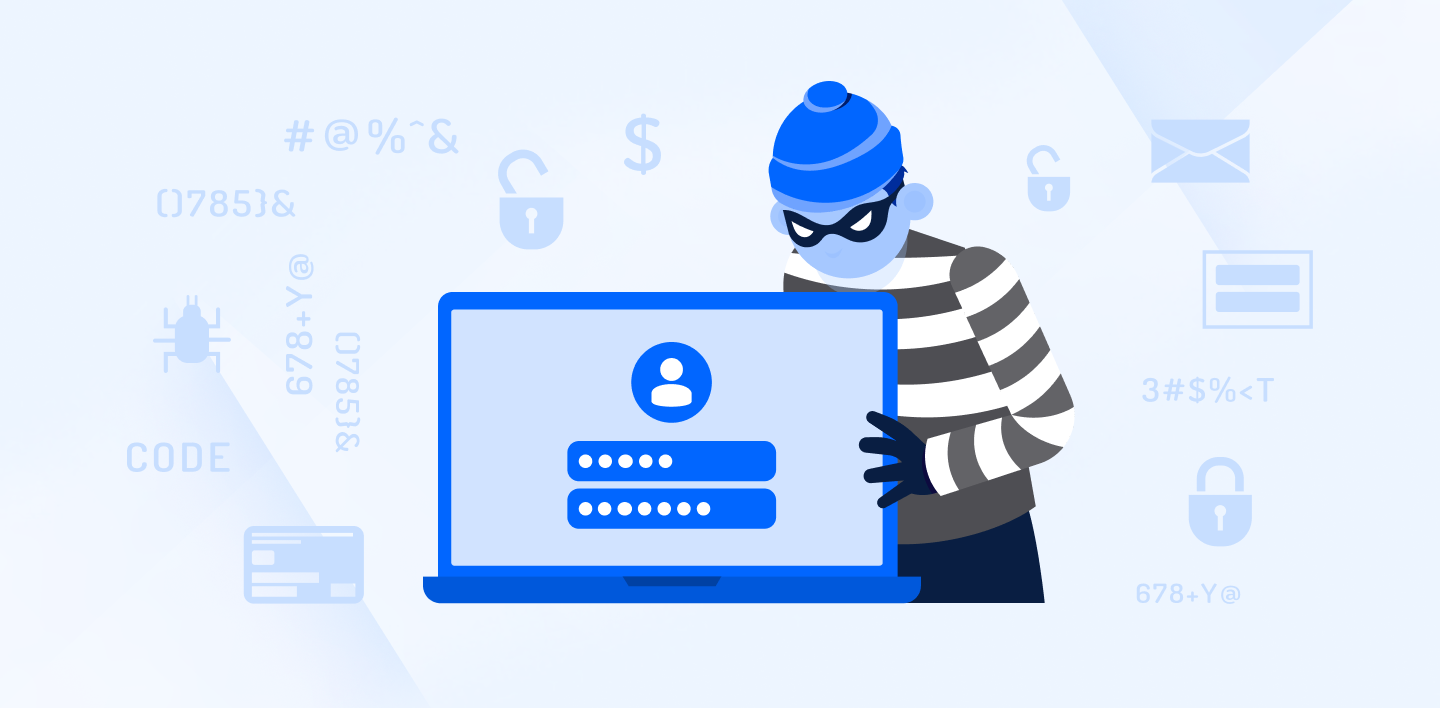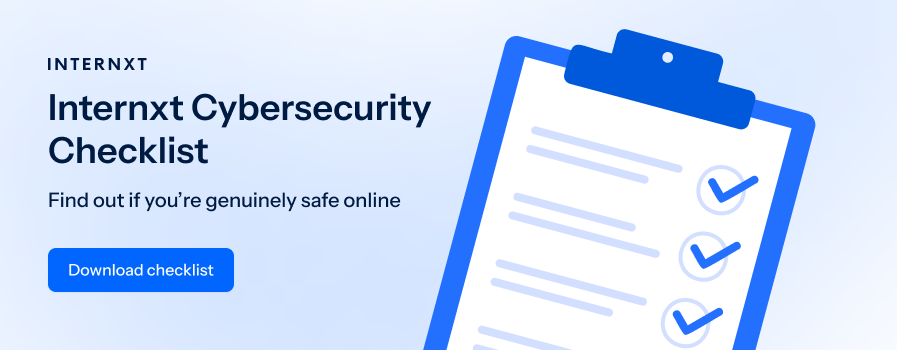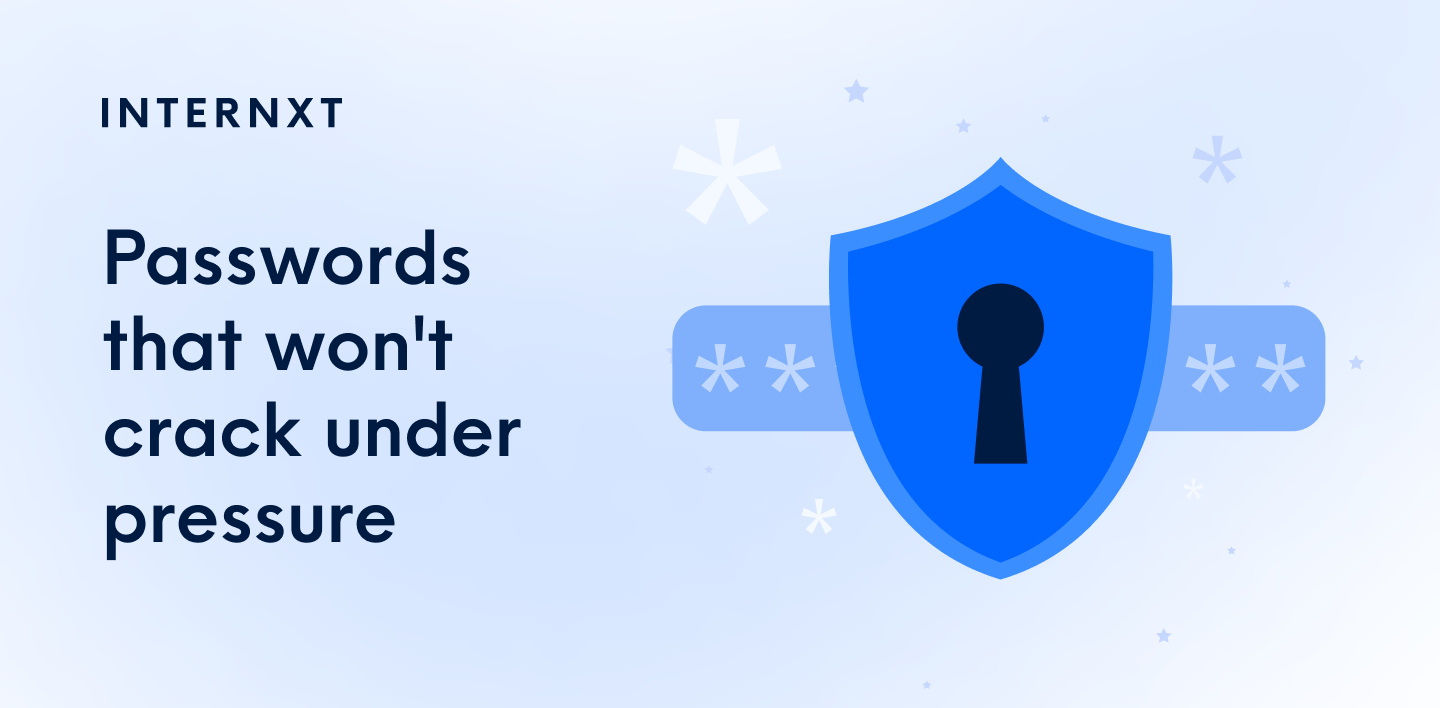What Is Cybercrime: The Different Types You Need to Look Out For

The question “What is cybercrime?” is more critical today than ever. Advancements in tech, oversharing on social media, and even the latest AI innovations have significantly increased the risk of cyberattacks.
Just look at the statistics. Ransomware attacks grew by 92.7% in 2021 compared to 2020. As internet connectivity and usage grow globally, cybercriminals are becoming more brazen in targeting unsuspecting victims.
Whether you are an avid or casual internet user, you must know what cybercrime is and how to safeguard your privacy and data. So, this article defines cybercrime and explores the various cybercrimes you must look out for.
Let’s get started!
What Is Cybercrime?
Cybercrime is any form of illegal activity using computers and networks. It may involve using networks or computers to spread malware.
Sometimes, however, cybercrime does not always occur behind a computer. Online stalking is another form of cybercrime where an individual plants a device in someone's car or backpack, such as an Apple AirTag or SmartTag, which is a huge breach of someone's privacy.
Cybercrime is regarded as a significant risk because of its devastating effects. It can cause software piracy and system failures. It can be used to disable systems or damage computers. Cybercriminals can render entire companies functionless, especially when an entire business network is attacked.
Cybercriminals can also cause breaches of sensitive information or data. They may attempt to steal financial accounts and credit card information from individuals. This information is then used in illegal financial transactions.
Cybercriminals can sell private information and corporate data on the dark web as a way to profit from their attacks.
All these explain why big tech companies have increased their spending to avert criminal activity brought about by cyber-attacks over the years.
Like these companies, it’s better to protect your business from being victimized in the first place. So, developing a cybersecurity strategy should be one of your priorities, even when you’re just starting a business.
This strategy is especially critical if you know most of your operations will run online. You’ll need a method for backing up your data, protecting your systems, and educating your workforce on the importance of cybersecurity from the get-go.
If you don’t know where to start, you can seek the help of a cybersecurity expert. They can help you create a plan that caters to your business’s specific needs.
Types of Cybercrimes
To better protect yourself, you must understand the different cybercrime types. Here’s a rundown:
Hacking
You cannot answer the question “What is cybercrime” without talking about hacking.
It is important to note that some hacking is done to improve the security of a network or device. It can also be done for research and study purposes. These types of hackers are called “white hat hackers” and are employed by major companies to boost cybersecurity.
However, most of the time, hacking is done to compromise systems and steal sensitive data. It’s unauthorized access to private networks or personal computers and devices.
How do hackers do this?
Hackers scout for unsecured, open wireless connections. Once they’re connected to the network, they gain access to other devices connected to it. They only need to bypass security configurations to hack into the devices and all their data.
To avoid getting hacked, don’t access your financial and personal data using public Wi-Fi. Turn off your GPS and wireless connections when you’re not using them.
Malware
Malware is any intrusive file or program that aims to infect a device or network. It steals sensitive data or alters the device’s normal functioning.
Malware can be used for monetary gain or sabotaging an organization and its operations. The common types of malware are:
- Viruses
- Trojans
- Spyware
- Adware
- Worms
- Ransomware
Malware attacks can happen through phishing emails. Criminals compromise email communications by featuring links and downloadable files that carry malicious software. The malware gains access to the system or device once the victim clicks to open or download the link. We’ll talk more about phishing emails later.
Social media spam is also used to spread malware. Around 47% of internet users have reported seeing more spam in their social feeds.
It works this way. An unsuspecting user can click on a video or photo that will redirect them to a fake YouTube channel or another spoof website. The site will then ask users to download and install a video player plugin. This plugin will often carry malware.
Malware is also spread through infected USB devices and other hardware. Once they’re connected to the computer, the malware infects the device.
You can protect your data by having antivirus software installed. Cybersecurity companies create these software solutions to detect any malware before it attacks and infiltrates your computer or networks.

Phishing
Phishing is a fraudulent practice. It involves the use of social engineering to scam unsuspecting victims. The scammer sends fake emails and messages to victims while pretending to be a reputable company.
The aim is to induce people to give their personal information or download malicious software giving the cybercriminal enough access to commit more crimes like credit card fraud or ask for ransom from the victim.
The fear of missing out is a common social engineering trick criminals use. The scammer can send a fake limited-time offer to the victim to get them to click on a malicious link or file attachment or download a malicious file. There are several types of phishing, including:
- Email phishing
- Spear phishing
- Smishing
- Vishing
- Whaling
Get anti-phishing add-ons for your computer to avoid being a phishing victim. These will smoke out any phishing attempts in seconds.
You may also wish to consider using an email finder to verify the business email addresses of the professionals you interact with online. That way, you’ll be sure whether the email you’ve received is from a legitimate source.
You’ll also want to learn how to stop spam emails from reaching your priority inbox.
Identity Theft
Identity theft occurs when a cybercriminal steals someone’s identity, social security number, and other personal data and uses it without their permission. This data can then be used to take loans and access their intellectual property and other sensitive information.
Scammers can access your data and steal your identity in several ways. Hacking, vishing, ransomware, and data breaches are a few common methods used to accomplish this. Here’s a diagram showing how identity theft happens.
Identity theft has several disadvantages for the victim. Besides losing money to cyber criminals, you also lose time while trying to regain control over your data. A lot of emotional distress is caused by identity theft as well. The scammer can commit crimes in your name, access your healthcare benefits, tarnish your identity, and ruin your credit score.
Furthermore, they can sell your data and have it circulating on the dark web. They can also open new bank accounts in your name and ruin your banking records.
All this emphasizes the importance of securing your data to prevent identity theft. Security experts encourage monitoring your credit reports and accounts regularly. That helps you see any fishy transactions that you may not have authorized. You’ll also see any bills or statements coming from accounts you did not open.
Staying vigilant is one of the best ways to avoid identity theft.
DDoS Attacks
Online businesses invest hugely in marketing for paid ads and SEO strategies for social media and influencer campaigns. However, a sudden spike in traffic is not always a good thing.
DDoS stands for Distributed Denial-Of-Service. It is an attempt to distort the normal functioning of a server or network by flooding it with internet traffic, preventing genuine users from accessing online sites and connected services.
In simpler terms, denial of service attacks are like an unexpected traffic jam on the highway. They clog up the way and prevent regular traffic from reaching its destination.
To accomplish this, cyber criminals use a network of internet-connected machines. The network has several devices like computers and IoTs that are infected with malware. The attacker gives them traffic authority and is therefore known as bots. A group of bots is a botnet.
The threat actor directs each bot to send instructions and connection requests to the victim’s IP address, therefore overwhelming the network or server. This is how the denial-of-service occurs in the victim’s regular traffic.
Since the bots are all legitimate internet devices, distinguishing a DDoS attack from normal internet traffic can be difficult. Here are a few ways to identify a network DDoS attack.
- Your server or website suddenly becomes unavailable or slow
- Surges in requests to one endpoint or page on your site
- A flood of traffic originating from a single IP range or address
- A huge amount of traffic comes from users with a single behavioral profile. For instance, the identical web browser versions, geolocation, or device type.
- Unnatural traffic patterns, for instance, spikes in traffic every 10 minutes or at odd hours.
Ensuring high network security and continuous network traffic monitoring will help you identify and prevent DDoS attacks on your network or server.

Cyberbullying
Cyberbullying is a form of harassment inflicted using communication devices like phones and laptops. Simply put, it is bullying that occurs through the internet.
Cyberbullying involves sharing harmful or embarrassing content about someone else with other people, causing shame and emotional distress to the victim, which may result in mental health problems.
Cyberbullying has also been associated with multiple cases of self-harm, so protecting being aware of popular online child safety measures to keep children safe online is imperative.
Sometimes confronting the bully is not the best way to respond to cyberbullying. It’s best to avoid retaliation since it doesn’t give the bully the satisfaction of seeing their advances affect you.
You should also think about blocking the cyberbully and reporting them to group admins or social networks to get them stopped. If you feel threatened, keep the electronic evidence to prove the crime. Then contact law enforcement agencies so they can catch the cybercriminal and put your mind at ease.
Online Scams and Fraud
Online fraud is any scamming activity that is done through the internet. Cybercrimes like banking fraud, spam, and theft of service can all be called internet fraud.
In this type of cybercrime, scammers, for instance, can attempt to con people looking for employment by giving them fake job opportunities. These fake jobs promise high pay and irresistible benefits to trick the victim into taking a specified action.
Here are a few tips to help identify these cybercriminal activities.
Online scams are often done for financial gain. Avoid sharing your passwords and personal information with anyone online to protect yourself from being a victim. Also, avoid using public Wi-Fi. These networks don’t have adequate security measures to safeguard your online activity.
Finally, use secure payment services when sending or receiving money. Secure services help you avoid financial loss, with your credit details and bank accounts safe from fraudsters.

Understanding Cybercrime to Protect Yourself Online
To wrap up, you’ve learned the answer to the question “What is cybercrime” in this article. The different cybercrime types include hacking, malware, phishing, identity theft, DDoS attacks, cyberbullying, online scams, and fraud.
You’ve also learned the various ways you can protect yourself from these cybercrime attacks.
Some tips I shared include installing antivirus software on your devices, avoiding unsecured public networks, and avoiding suspicious sites. Make sure you download files and click on links only from trusted sites.
You should also research how to identify fake messages should you receive any of these forms of spam. Your goal is to ensure these are legitimate and won’t cause you any harm if opened.
Remember to run continuous diagnostics and mitigation programs to ensure you remain secure. These will take time and require some effort. However, they’re also one of the best strategies to keep you safe. Ultimately, it’s better to be a step ahead of cyber threats and criminals at all times.

